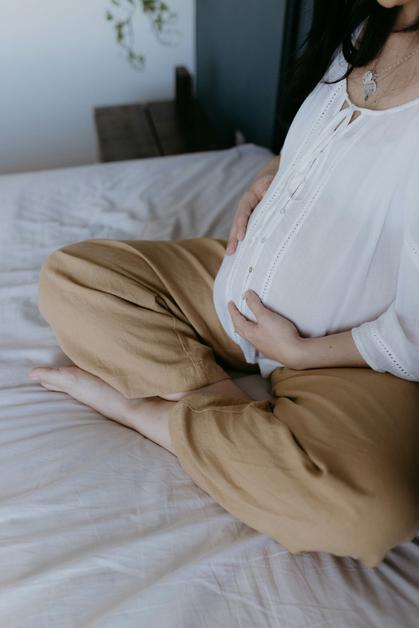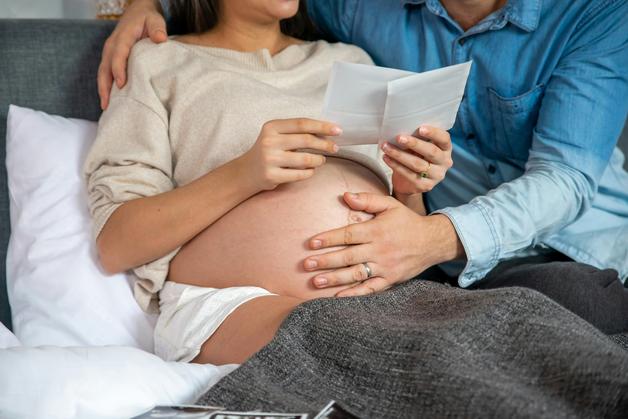Feeling a symphony of odd twinges, heavy legs, buzzing nerves, and sudden back spasms during pregnancy? You are not imagining things. Those persistent, sometimes unsettling sensations—collectively known as pregnancy aches—frequently become front and center on many parents’ minds. Each day brings new discoveries: why is the lower back suddenly a focal point of discomfort, what are those prickly cramps in the legs at midnight, and how can one distinguish normal aches from signals that require urgent care? Decoding the origins of these discomforts, understanding their shifting nature, and recognizing when they require attention can transform a period of vulnerability into one of empowerment and comfort. Expect to explore causes, medical explanations, solutions, and signals to watch for. Take a deep breath—clarity and support await.
The Mechanics Behind Pregnancy Aches
Hormonal Surges and Tissue Adaptation
Why do pregnancy aches sweep in with such regularity? The answer often starts with a complex hormonal overture. Progesterone, estrogen, and especially relaxin hormone orchestrate changes deep within connective tissues. The body, exquisitely attuned to the upcoming birth, softens ligaments and broadens joints, particularly around the pelvis. This adaptability, though ingenious for delivery, exposes muscles and joints to new strains—think of it as recalibrating a tightly tuned instrument.
Sudden flexibility can spell trouble for stability. Muscle groups work overtime to keep the body upright, leading to musculoskeletal discomfort, especially in the lower back, hips, and pubic region. The feeling resembles soreness after an intensive but unfamiliar workout—except this workout never truly ends.
Posture Shift, Weight Gain, and Gravity’s Effects
With postural changes and a new center of gravity, it’s inevitable: every step, turn, and bend recruits muscles in unfamiliar patterns. The abdomen protrudes, the curve of the spine exaggerates, and the pelvis tilts. Even a minor action—retrieving something from the floor or sitting for long periods—can prompt sharp twinges or nagging stiffness. The upper back and shoulders, compensating for enlarged breasts and a shifted torso, often become zones of relentless tension. Nighttime may intensify discomfort, with sleep punctuated by cramps or spasms precisely when rest is most essential.
Nutrition, Hydration, and Mineral Balance
Parents often wonder: can diet actually influence pregnancy aches? Absolutely. Magnesium and calcium, two unsung heroes, are vital for optimal muscle function and nerve transmission. When depleted, muscles misfire, causing cramps, twitches, and even restless legs. Factor in fluctuating hydration levels—especially with increased blood volume and fluid redistribution—and it’s easy to see why nighttime cramps strike or why muscle tension builds after a stressful day.
Movement Patterns and Modern Sedentariness
A paradox: both overactivity and excessive sitting can fire up pregnancy aches. Extended standing, hours at a desk, or sudden exertion, such as lifting older children or groceries, spark discomfort. On the other hand, too little movement (“sedentariness”) slows circulation, enhances swelling, and stiffens joints. Finding the elusive balance between activity and rest becomes a daily puzzle, one that requires creativity and regular adaptation.
Emotional Stress and Sleep Quality
An overlooked but powerful amplifier, emotional stress heightens sensitivity to every ache and pinch. Anxiety triggers muscle tension and, when intertwined with common sleep disturbances, creates a morning tapestry of stiffness and residual fatigue.
Circulatory Shifts and Fluid Retention
Some parents wake up to find feet, ankles, or hands puffy and heavy. The culprit? Increased blood volume and pressure from a growing uterus compress veins, slowing return flow and promoting mild edema (swelling). In some cases, nerve passages also narrow, resulting in tingling, numbness, or sharp shooting pains—particularly in the wrists (carpal tunnel syndrome) and along the sciatic nerve in the legs.
Distinguishing Typical Pregnancy Aches from Warning Signs
Some discomfort is par for the course. Expect:
- Diffuse soreness, especially in the lower back, hips, and legs
- Morning stiffness, which ebbs with gentle movement
- Intermittent cramps (particularly in the calves during sleep cycles)
- Breast soreness, heaviness, and hypersensitivity as lactation structures mature
- Sudden twinges as ligaments stretch during positional changes
Yet, vigilance matters. Symptoms that require swift evaluation by a healthcare provider include:
- Sharp, relentless, or localized pain resisting all home relief efforts
- Regular contractions of the uterus
- Marked, unilateral swelling, redness, or warmth (potential signs of thromboembolism)
- Fever, unexpected weakness or numbness, or sudden neurological symptoms
- Any bleeding or faint fetal movement
- Signs suggestive of preeclampsia—new severe headaches, visual disturbances, hypertension
Prompt attention allows underlying issues, such as infection or vascular complications, to be addressed swiftly, safeguarding both parent and baby.
A Closer Look: Common Forms and Presentation of Pregnancy Aches
Back Pain—The Universal Complaint
The shift in spinal alignment and loosening ligaments make the lower back ground zero for pregnancy aches. Everyday activities—lifting, bending, or even sitting—may compound the burden. The upper back and shoulders share the load, strained by breast enlargement and altered posture.
Supportive Strategies: Structured chairs, intentional posture, scheduled micro-breaks, and maternity belts often offer significant, tangible relief.
Pelvic and Hip Discomfort
Softened pelvic joints translate into a spectrum of sensations: from gentle instability to sharp pain at the symphysis pubis (where the pelvis joins in front). Some may notice aches radiating towards the hips or inner thighs, intensifying after walking or in bed at night.
Relief Measures: Pillows between the knees, gentle stretching, and the therapeutic embrace of a support belt may transform sleep quality and day-to-day mobility.
Abdominal Twinges and Round Ligament Pain
As the uterus stretches its boundaries, small cramps echo the earliest days of pregnancy, while round ligament pain—sharp, fleeting stabs low in the abdomen—may appear with sudden movement.
Tactics: Move with measured slowness, allow brief periods of rest, and favor warm compresses over intense heat.
Leg Cramps, Restless Limbs, and Circulation
Night brings its own drama. Calf cramps or the urge to shift legs incessantly (restless legs syndrome) disrupt precious sleep. Often, these are linked to mineral fluctuations or dehydration.
Relief: Hydrate, stretch with intention at day’s end, and ensure dietary intake of calcium and magnesium meets evolving needs.
Joint Soreness, Swelling, and Fatigue
Hormone-induced looseness creates vulnerability—knees, ankles, wrists, even fingers may ache after a day’s exertion, especially with swelling.
Prevention: Supportive footwear, alternating movement and rest, and ergonomic adjustments (think: extra cushions, strategic wrist splints).
Breast and Nipple Sensitivity
Hormonal choreography transforms breast tissue, increasing fullness and sometimes producing sensation ranging from dull ache to electricity-like discomfort.
Comfort Solutions: Invest in a well-fitted, supportive bra (avoid tight bands), and try gentle warmth to soothe.
Nerve Compression Syndromes
With swelling, nerves traveling through narrow anatomical spaces can become compressed, producing tingling or numbness—most often at night. Notable examples: carpal tunnel syndrome in the hands, or shooting pain down one leg from sciatica.
When to Seek Help: Wrist splints, rest, and sometimes physiotherapy work wonders, but persistent symptoms must always be discussed with a professional.
Rib Discomfort and Elevated Diaphragm
Later stages bring upward expansion of the uterus, pressing on the rib cage and sometimes creating sharp or persistent rib pain—often most noticeable on deep breathing.
Warning Signs: Rib pain paired with breathing trouble or chest pressure needs immediate assessment.
Swelling and “Heavy” Limbs
Mild edema—swelling in feet, ankles, or hands—marks advancing pregnancy for many. This is primarily due to fluid shifts and vascular compression.
Mitigating Tips: Elevate legs, use mild compression stockings, and moderate salt intake without resorting to restrictive diets.
Evidence-Based Strategies for Easing Pregnancy Aches
Motion and Gentle Conditioning
Light stretching routines (morning and evening), prenatal yoga, and water exercises capitalize on the buoyancy and resistance of water to relieve muscle load. Daily walks stimulate blood flow and maintain flexibility.
Ergonomics and Postural Care
Consistent attention to posture while standing, sitting, and lifting dramatically reduces back and pelvic aches. Swap soft chairs for supportive ones, alternate activity with rest, and rethink daily movements.
The Power of Support Devices
Supportive shoes (preferably with pronounced arch support), specialized belts, and rightly placed cushions shine as simple yet transformative tools.
Touch and Temperature
Prenatal massage therapy, carefully tailored for pregnancy stages, offers deep muscle comfort. Gentle self-massage or warm baths (careful with water temperature) can take the edge off persistent aches.
The Muscle-Nutrient Connection
Always aim for a diet rich in magnesium (whole grains, nuts), calcium (dairy, leafy greens), and protein—the backbone of muscle health and recovery. Top up with at least 1.5 liters of water daily to ward off cramps.
Prioritizing Restful Sleep
Experiment with sleeping on the left side, using multiple pillows to offload pressure from the abdomen, hips, and lower back.
Medications—Restraint and Medical Advice
Acetaminophen (paracetamol) is commonly considered safe under professional guidance, while NSAIDs (like ibuprofen) are generally discouraged, especially later in pregnancy. When in doubt, consult your prescribing practitioner.
Preventive Habits and Self-Care
Interlace gentle physical activity with moments for deep relaxation. Avoid prolonged inactivity, sudden exertion, or heavy lifting when possible. Mindful, paced breathing and short breaks peppered throughout the day deposit daily dividends in comfort.
The Ripple Effect: Emotional Repercussions of Pregnancy Aches
The persistence of pregnancy aches can erode patience, dim the excitement of awaiting a baby, and disrupt sleep. While frustration and fatigue are understandable, integrating relaxation techniques—yoga, guided breathing, brief meditations—can restore calm and reclaim restorative rest. Engaging your household and support network, explaining current needs or participating together in prenatal classes, can also soften the daily load. Online and in-person support forums create a space to share stories and pick up practical strategies without judgement or comparison.
When to Seek Professional Guidance
Some symptoms require prompt professional evaluation:
- Severe or persistent pain, resistant to home strategies
- Regular uterine contractions
- Notable, asymmetrical swelling or warmth in a limb
- Fever, neurological changes, or sudden weakness
- Unexplained bleeding or shifts in fetal movement
- Symptoms indicating preeclampsia—such as continuous headache, visual changes, or rising blood pressure
Midwives, doctors, physiotherapists, and osteopaths are all well-versed in distinguishing typical pregnancy aches from red-flag complications, ensuring each concern receives respectful attention and evidence-based solutions.
Key Takeaways
- Pregnancy aches are an integral part of the journey, born from hormonal changes, weight gain, postural adjustments, and shifting movement patterns.
- Knowledge is not only comforting, but empowering: gentle movement, prenatal yoga, nutritional awareness, well-chosen supports, and attentive rest offer most parents safe and effective relief day to day.
- Unexpected, severe, or persistent symptoms—especially bleeding, fever, extreme swelling, or neurological changes—should be evaluated swiftly by healthcare experts.
- Emotional well-being is tightly interwoven with physical comfort; supportive networks and professional resources enhance both resilience and joy along the way.
- For further tailored advice, actionable reminders, and health tracking, explore the Heloa app for free child health questionnaires and specialized guidance for every family situation.
With insight, practical strategies, and the reassurance of accessible support, pregnancy aches transform from a source of uncertainty into a shared, manageable aspect of the parenting adventure.
Questions Parents Ask
Can pregnancy cause flu-like body aches?
Yes, it’s possible to feel flu-like aches in early pregnancy—some parents report mild, diffuse muscle discomfort throughout the body. These sensations are often connected to hormonal shifts and the body’s natural adaptation to pregnancy. As long as these aches are not accompanied by a high fever or other concerning symptoms (such as severe headaches or unusual weakness), rassurez-vous, they are usually considered part of the body’s normal response. In any case of uncertainty or if the aching is intense or persistent, reaching out to a healthcare professional brings reassurance and the right support.
Is it normal to have stomach aches during pregnancy?
Mild stomach or belly aches can appear throughout pregnancy, particularly in the first and third trimesters. The most common causes include hormonal changes, stretching ligaments, and the physical expansion of the uterus. Most of these sensations are expected and temporary. However, if pain becomes sharp, constant, or comes with other symptoms like bleeding, fever, or vomiting, il importe de contacter un professionnel de santé. Each parent’s experience is unique—n’hésitez pas à poser des questions et à exprimer vos préoccupations.
Do aches and pains increase in the third trimester?
Aches and pains often do become more noticeable in the third trimester. As the baby grows, additional weight and a shifting center of gravity put more stress on muscles and joints. This can lead to increased discomfort in the back, legs, and pelvis. Some parents also notice more stiffness or swelling late in the day. Gentle movement, regular rest, and supportive devices can help many parents feel better. Rassurez-vous, you are not alone—many parents share these sensations as the body prepares for birth.

Further reading:









